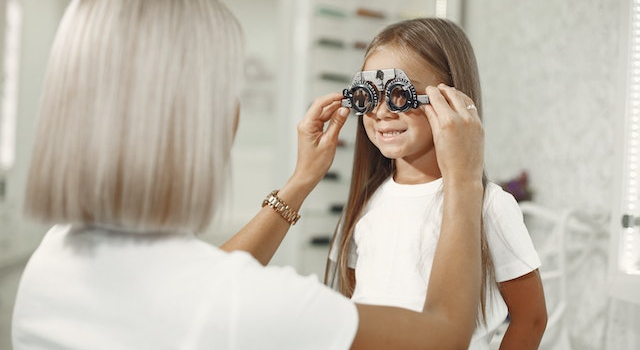
Ensuring good vision health in children is crucial for their overall development and academic success. Various vision problems can arise during childhood, affecting their ability to learn and interact with their environment. Understanding common vision issues and how to address them can help parents proactively support their children's eye health.
Eye Problems Frequently Seen in Children
Refractive Errors
Refractive errors occur when the shape of the eye prevents light from focusing directly on the retina. The main types of refractive errors are:
- Myopia (Nearsightedness): Difficulty seeing distant objects clearly
- Hyperopia (Farsightedness): Difficulty seeing close objects clearly
- Astigmatism: Blurred vision at all distances due to an irregularly shaped cornea or lens
Amblyopia (Lazy Eye)
Amblyopia occurs when one eye is weaker than the other, leading to poor vision development in the affected eye. Strabismus (misaligned eyes) often causes refractive errors between the two eyes.
Strabismus (Crossed Eyes)
Strabismus is a condition where the eyes do not align properly and point in different directions. This can cause double vision and difficulty focusing on objects.
Convergence Insufficiency
Convergence insufficiency is the inability to maintain eye alignment when focusing on close objects. This can lead to eye strain, headaches, and difficulty reading.
Color Vision Deficiency
Color vision deficiency, often called color blindness, is the inability to distinguish certain colors. While it does not affect the sharpness of vision, it can impact learning and activities that rely on color perception.
Symptoms of Vision Problems in Children
Parents should know the signs that may indicate a vision problem in their child:
- Frequent squinting or blinking
- Complaints of headaches or eye strain
- Difficulty reading or holding books very close
- Poor hand-eye coordination
- Avoidance of activities requiring good vision
- Covering one eye to see better
- Declining academic performance
How to Address Vision Problems in Children
Regular Eye Exams
Requesting regular comprehensive eye exams is the most effective way to detect and address vision problems early. The American Optometric Association recommends eye exams at six months, three years, and before starting school. Afterward, they advise annual exams.
Corrective Lenses
You can correct refractive errors such as myopia, hyperopia, and astigmatism with glasses or contact lenses. An eye care professional can prescribe the appropriate lenses based on your child's needs.
Vision Therapy
Vision therapy is a program of exercises to improve visual skills and correct issues such as amblyopia, strabismus, and convergence insufficiency. An eye care professional supervises this therapy and tailors it to the child's specific condition.
Patching
For amblyopia, patching the stronger eye can help strengthen the weaker eye. This method forces the brain to rely on the weaker eye, promoting better vision development.
Eye Exercises
Certain eye exercises can help improve convergence insufficiency and other focusing problems. An eye care professional can recommend specific exercises based on the child's condition.
Managing Screen Time
Excessive screen time can contribute to digital eye strain and exacerbate existing vision problems. Encourage regular breaks using the 20-20-20 rule: every 20 minutes, look at something 20 feet away for at least 20 seconds.
Healthy Diet
A balanced diet rich in vitamins and nutrients supports overall eye health. Foods high in omega-3 fatty acids, vitamins A, C, and E, and antioxidants are beneficial for maintaining good vision.
Prevent Common Vision Problems With All About Eyes
Addressing vision problems in children is crucial for their overall development, learning, and well-being. By being aware of common vision issues and their symptoms, parents can take proactive steps to ensure their child's eye health.
Regular eye exams, corrective lenses, vision therapy, and healthy habits are essential for managing and treating vision problems. If you have concerns about your child's vision, contact All About Eyes and request a comprehensive eye exam.
